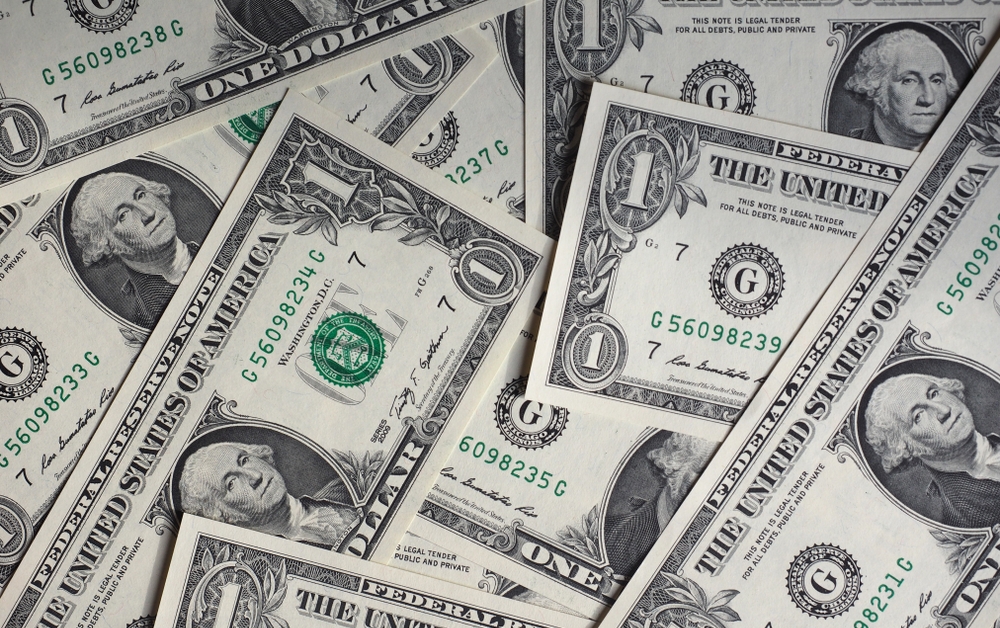Amazon Prime Membership Should Have Been a Tokenized Asset
An Amazon Prime delivery truck, downtown New Orleans, Louisiana. (Tony Webster/Flickr)
Jeff Dorman, a CoinDesk columnist, is chief investment officer at Arca where he leads the investment committee and is responsible for portfolio sizing and risk management. He has more than 17 years of trading and asset management experience at firms including Merrill Lynch and Citadel Securities.
Decentralized money is important, but tokenized ownership is perhaps an even bigger and more important concept, as it stands today. The idea an ownable asset can be both a utility and an investment at the same time could change the course of investing, and company formation as we know it. And based on recent actions from the government and corporations, we may be closer than ever to achieving this.
A capitalist society means private property rights and the free market serve as the basis of trade, distribution of goods, and development, whereby private ownership and production is operated for profit. But society is now beginning to recognize that “shareholder capitalism” is also rife with negative externalities. You need only look at the pressure companies felt (and the greediness and misaligned incentives of management teams) to increase stock prices by spending billions of dollars of idle cash on stock buybacks, only to be left with no rainy day funds during a three-month pandemic.
This, of course, led to trillions of dollars in bailouts at society’s expense; a negative externality that will affect multiple generations for decades. Joe Biden recently said, “It’s way past time to put an end to the era of shareholder capitalism – the idea that the only responsibility a corporation has is to its shareholders. That’s simply not true and it’s an absolute farce. They have a responsibility to their workers, to their country. That isn’t a new or radical notion.”
Independent of political leanings, companies are feeling this pressure more than ever. Not just from Washington, but from society. Is there a way to cater to shareholders while also catering to society and your customers? As usual, we can look at Amazon as an example.
More than 150 million people have an Amazon Prime membership, and everyone pays the same price for it. However, a much smaller percentage of people own AMZN shares. You might argue that most AMZN shareholders probably have a Prime membership, but it is certainly not the case that most Prime members own AMZN stock. The Venn diagram might look like this:

When you buy AMZN stock, you know exactly what you are getting – a share of the company’s profits and a “claim on future cash flows.” However, when you buy a Prime membership, you have no idea what you are getting. At first, purchasing an Amazon Prime membership only gave you faster and cheaper delivery. But over 10-plus years, Prime membership has been rewarded with additional benefits like music, movies and now discounts at Whole Foods.
As a Prime member, you have reaped the benefits of good management and network growth, but it made no difference whether you were the first Prime member or the last to join because you pay exactly the same price as everyone else and receive the same rewards. The same cannot be said for AMZN shareholders, where the price you pay depends on when you purchase.
This is the only path where capitalism and socialism can converge, and we’re seeing it happen in real time.
Had Prime membership been tokenized, this Venn diagram of ownership would have overlapped much faster. As an early adopter, you would have gained both financially from the increased demand for Prime membership (driving token price higher) and still gained utility as Prime membership benefits were enhanced.
Further, you would have become a strong evangelist for the brand, as you would be financially incentivized to get others to join Prime faster. Both Amazon shareholders and Amazon Prime members have been rewarded, but one could argue both would have done even better had the incentive structure been tweaked through tokenization.

As Arca sees it, this is the only path where capitalism and socialism can converge, and we’re seeing it happen in real time. Debt, equity and tokenized digital assets will all have a place in an investor’s portfolio, and more importantly, in customers’ portfolios. The lines are likely to blur as investors become active participants in the bootstrapped growth of the companies they love.
The best example of this to date is Binance and its BNB token. At first, owning the BNB token simply gave you discounts when you used Binance’s services. Today, BNB’s use cases have expanded to:
Referral program staking – If a person holds 500 BNB or more, they receive double the referral bonus, as well as a portion of the trading
IEO staking – The number of tickets you can claim depends on the amount of BNB you hold.
Discounted Trading fees – Binance discounts transaction fees by 25% (decreasing to 12.5% in July) whenever a transaction fee is paid for in BNB.
Assist network transactions using BNB on Binance DEX.
Voting power – The more BNB you own, the more votes you have regarding which coin should list on Binance.
Like Amazon, Binance’s business lines and revenues have exploded. Unlike Amazon, Binance’s customers have benefited financially, in addition to benefiting from enhanced services. As a result, Binance’s Venn Diagram might look much closer to this:

It may sound terrifying to invest in something like a digital asset without knowing exactly what rights you are receiving for your investment. That token designs can change, and features can be added or subtracted, may give you pause as you wonder what your rights are as a token holder.
But when you dissect this, it’s no different than what you do as a shareholder. Those who bought AMZN stock in the early days of the company thought they were investing in an online bookstore. When you back good management teams, it doesn’t really matter what your rights as a shareholder or a token holder are, what matters is that you and management saw the potential before others did. The flexibility of a token’s use cases is just as exhilarating as it is terrifying.
The best token designs will, therefore, be those that incentivize customers to take a risk in adopting a new platform before it is clear that it is worth it, and they will be rewarded via increased token prices that will have future value based on how much token holders contribute to the company’s growth. As communities form around these network effects, token holders may be incentivized even further to evangelize on the company’s behalf, thanks to “ownership” rights and a sense of community involvement.
Tokenized ownership may be an effective way to reduce monopolies while still encouraging development and innovation. While companies and politicians fight, the solution may already be here.
Disclosure
The leader in blockchain news, CoinDesk is a media outlet that strives for the highest journalistic standards and abides by a strict set of editorial policies. CoinDesk is an independent operating subsidiary of Digital Currency Group, which invests in cryptocurrencies and blockchain startups.









